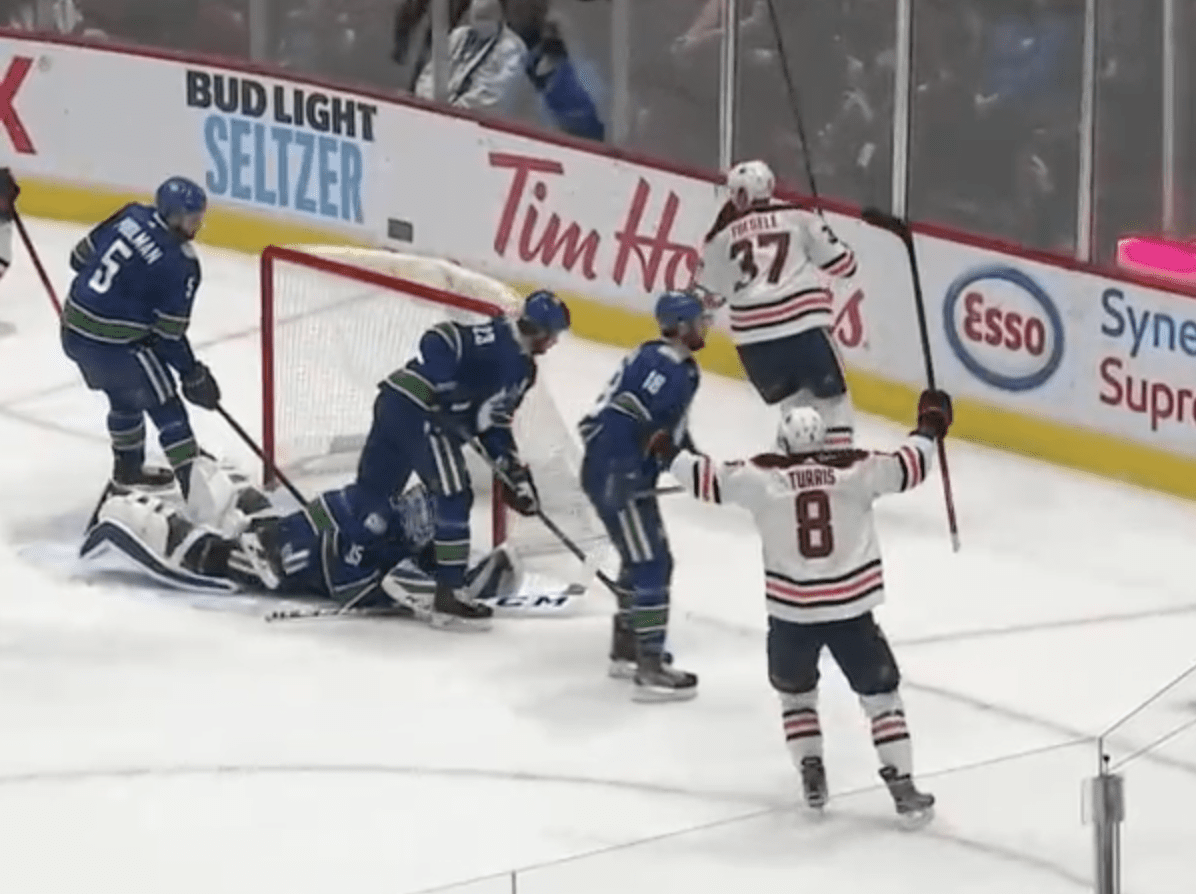Vancouver Canucks
Crappy Vancouver Canucks PP and PK? A Special Teams Primer

It’s a term from back when everyone had records, as in vinyl music albums … “Like a broken record.” As in, it keeps playing over and over and over again. That’s the feeling one gets with the discussions and questions surrounding the Vancouver Canucks power play and penalty kill at the moment.
There’s only so many ways the media can ask the same question: How do you fix the power play? How do you fix the penalty kill? That’s without turning it into a coach’s clinic, which understandably, Vancouver Canucks Head Coach Travis Green is not going to do during a media conference.
“It just has to be better,” says the coach. He also mentioned a couple of his high end players having to be better as well.
So much of success comes with confidence, or the team version of confidence, momentum. One NHL coach pointed out to me that the Canucks could score two power play goals in a game and be off and running.
“You never know, once they get a couple, they could have a 10-for-25 run,” he said. Oh to dream.
Another NHL assistant earlier this season referred to the Vancouver Canucks power play as “lethal”. That was back when the Canucks man advantage tallied a power play goal in three consecutive games and was operating at a 27% success rate during the stretch against Chicago, Seattle, and Minnesota. Then it cooled off dramatically. The Canucks haven’t tallied a PP goal since that October 26th game against the Wild and are 1-for-20 during their homestand (5%).
What You’re Looking At …
The terminology varies among coaches around the NHL but not by much. Teams generally utilize one of two basic set-ups, the “2-3”, also known as the “spread” or the “box and one” (not to be confused with the “box and one” even strength defensive zone formation, that former NHL coach Claude Julien made popular and ran for years, including in the Stanley Cup Final against Vancouver) to some, and the 1-3-1, a common variation of what many used to refer to as the “umbrella”. The umbrella placed a bit more emphasis on the net front presence, often with two players low around the goal or goal line, where now the emphasis is on the “bumper”, or the man in the slot working with the men on each half-wall, “flank”, or “elbow”. That’s the player working along the half-boards in and out of the face-off circle.
The power plays can morph into one another depending on adjustments to whatever penalty kill the opponent is running.
Ultimately the key is movement, just watch the Boston Bruins scoring four power play goals against the Detroit Red Wings Thursday night, . Patrice Bergeron, who had three of them, always slides around. Although it’s obvious, a coach reinforced to me that if the power play isn’t “fluid”, it’s too easy to cover. If Brad Marchand drags a defender down low from the circle to the goal line, you’ll see Bergeron slide over above him into the face-off circle, potentially drawing another defender down or across, opening seams to the weak side of the ice. Or if Bergeron gets open for a one-timer, he takes it.
Bergeron slid over and scored his first power play goal from the top of the right wing circle on a feed from the right corner. His second came close to the same spot, a bit more in the slot, on a blind feed from Marchand along the end boards. His third came from the traditional bumper spot in the slot on a simple pass from the right circle. To be fair in this case, the Detroit penalty kill looked stoned.
The other-worldly Edmonton Oilers power play is another story. If “whirling dervish” could be adopted by NHL coaches as a power play term, it would only apply to one team. Tracking Connor McDavid can make one dizzy. Once they get everyone moving, good luck stopping the Oilers.
Obviously you have to have skilled players to be successful on a power play. No one would argue that the Canucks are lacking in that department. It’s ultimately two things that lead to successful execution: Movement and confidence. Like in so many of life’s ventures, success often comes down to mind over matter. It’s the main reason conversations about “fixing the power play” or “what’s wrong with the power play” don’t provide for a technical answer. Much of the answer is intangible.
As for the penalty kill, one of the things the Nashville Predators did well Friday night was pressure the Vancouver Canucks power play with what’s called “the wheel”. Again not to be confused with when a D-zone player “wheels” the puck around the boards in an attempt to clear or break-out.
The wheel penalty kill involves constant pressure from one or both PK forwards. It works particularly well against a power play suffering through low self-confidence. You’ll notice Quinn Hughes was consistently being attacked at the point. If he’s able to cleanly find a teammate against an over-committed PK’er, then a brief 4-on-3 below the top of the circles and a scoring opportunity can result. If he doesn’t, and he often didn’t, the puck gets turned over, which results in a successful PK clear or a short-handed odd man rush or breakaway. We saw both of those on Friday.
A majority of penalty kills sit in the box formation that becomes a diamond (1-2-1) that becomes a box, depending on what the power play is running and how many players are manning the point(s). The traditional PK waits for trigger points, or pressure triggers. When puck possession for the offensive team becomes vulnerable, let’s say along the boards, usually as many as three players will attack that side of the ice, trying to out-number the power play and get a clear. The remaining weak-side forward will slide over to protect the slot. If the offense regains possession, the PK hustles back into position.
The Vancouver Canucks PK gave up a goal in the first period against Nashville in the latter formation. Unfortunately the point shot in this case deflected off JT Miller’s stick. Luck often has a lot to do with power play success as well. The Oilers received a lucky bounce on their second of two power play goals against Vancouver the night before Halloween. Friday night, Miller appeared to be just trying to get out of the way, as opposed to blocking the shot with his stick, a concern we discussed here the other night.
Actually, if you go back to the Oilers first power play goal against Vancouver, there was a lucky bounce involved there as well. A shot from the left wing circle hit Juho Lammikko’s stick, caromed off Demko and bounced out to Warren Foegele for the rebound goal.
Hot teams get breaks. Cold teams don’t. There’s another large part of your explanation.
















